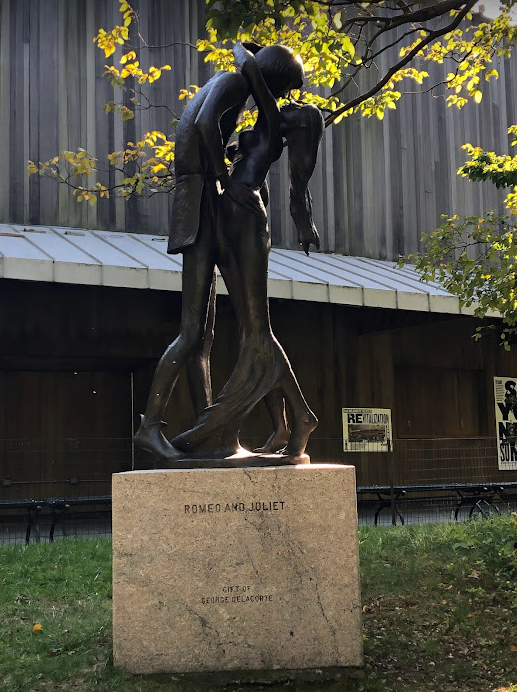Romeo and Juliet is not a romance; it’s a tragedy
Romeo and Juliet, two lovers in an embrace of death
“These violent delights have violent ends, and in their triumph die like fire and powder, which as they kiss consume.”
This recognizable quote—from William Shakespeare’s Romeo and Juliet—encompasses the tragic love story that is told in the play.
It also encompasses the toxic love story that so many after Shakespeare have sought to recreate, whether in fiction or in their own lives.
Romeo and Juliet tells the story of two teenagers—one thirteen, the other sixteen—who fall in love at first sight, prompting a series of events in which bonds were broken or further strained, morals were thrown aside, and six people were killed.
It may seem absurd, but despite the obviously tragic nature of this tale, the bloodshed is often overlooked. Romeo and Juliet has been romanticized time and time again as a story of true love defying all the odds when in reality, it defied none of the odds.
“These violent delights,” as mentioned in the above quote, refer to the “love” between Romeo and Juliet, if it can even be called that. The quote goes on to say that such a love destroys everything it touches. The love between Romeo and Juliet does just that, killing a mother, a best friend, and the two lovers themselves, along with two other characters who were, admittedly, a nuisance.
Why then, have so many people made it their goal in life to find a love like that between Romeo and Juliet, which “consumes all that it kisses?” Such love will tear apart families, destroy trust, and kill relationships, if not living, breathing, people.
Romeo and Juliet has been romanticized time and time again as a story of true love defying all the odds when in reality, it defied none of the odds.
Furthermore, the bond between Romeo and Juliet can barely be classified as love. From the moment they lay eyes upon each other, they are infatuated. At such a young age, it is possible that they knew what love truly is, but it is certainly not probable. More likely, they were hormonal teenagers who were attracted to each other because of their physical appearances and also because of the forbidden nature of their relationship.
Young people especially are drawn to things that they cannot have, and Romeo and Juliet were just that for each other. This is known as the “forbidden fruit effect,” which essentially states that anything that appears to be unavailable is more desirable.
The whirlwind nature of Romeo and Juliet’s romance is another aspect that appeals to people throughout the world, but it is also further evidence that they were not actually in love. They barely had time to get to know each other before they were making plans to marry and run away.
The destructiveness of the love between Romeo and Juliet—or whatever it may actually be—is not to be overlooked. The play is a tragedy overall, and both of the lovers end up dead, for reasons that could have easily been prevented through communication—a further testament to the youth and inexperience of both Romeo and Juliet.
The only positive outcome of this narrative was the termination of the feud between the Montague and Capulet families because of their shared torment. This torment, though, was caused by the two suicides—for reasons that weren’t true—of the heirs of these families.
Many romantics wish for what Romeo and Juliet had but don’t realize that in doing so, they wish for death.
“These violent delights have violent ends,” after all.

Millie Alt is a junior excited to be starting her first year on The Central Trend. She loves, loves, loves to write and is so excited to have an opportunity...































































































Carolyn Alt • Dec 3, 2022 at 5:24 pm
!!! So good!!!